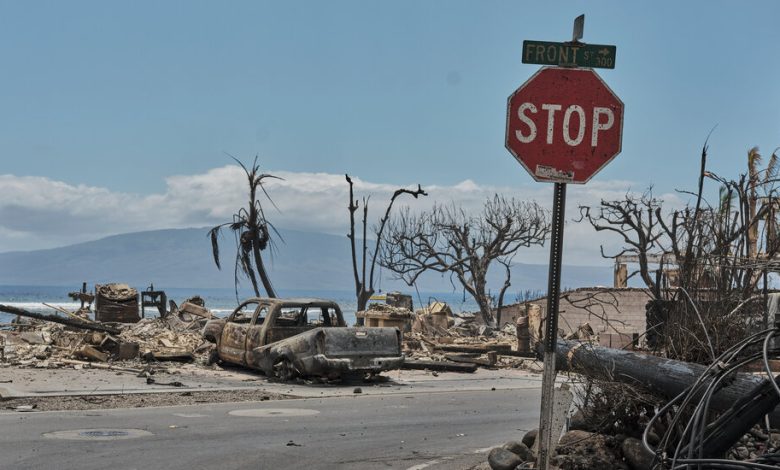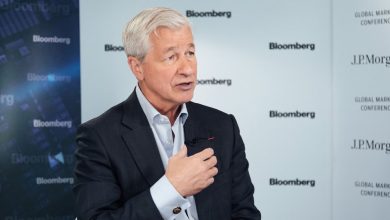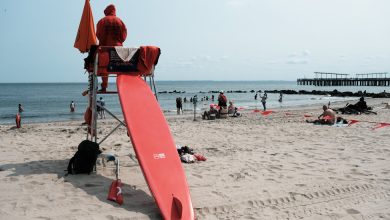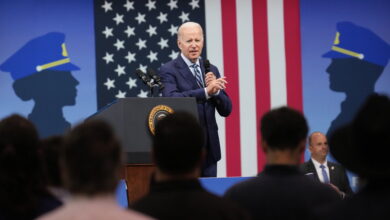After the Shock and Grief, Hawaii Will Reinvent Itself Again

The disaster that erased the beloved West Maui town of Lahaina this week comes with the bitter taste of bewilderment. Brush fires met high winds whipped by a far-off hurricane, and overnight a historic town was gone, a pile of smoke and ashes. A lush watercolor landscape is redrawn in gray and black. At least 55 people are dead, and many more are missing.
A hurricane just burned down a town. It’s all so weird and horrifying.
Living in Hawaii long enough gives you a familiarity with sudden catastrophes, the kind that can obliterate a community in a week, a day or an instant. To live in my home state or to love it from a distance is to know the continual threat of hurricanes, tsunamis, earthquakes and volcanoes.
But a lethal wildfire? That was new for Hawaii. And everything is changed.
We may not get a definitive verdict on whether Lahaina died for humanity’s environmental sins, but we know that climate change is making Hawaii hotter and drier and that invasive grasses have been allowed to run rampant. Drought on Maui turned the grass into ready fuel and heightened the risk of wildfires, and then a hurricane brushed by.
The planetary crisis is hardly Hawaii’s fault, but like other island areas in our rising oceans, it is unusually imperiled, and it has to do something. And when wildfires swept over Maui and the Big Island, it was a brutal reminder that Hawaii needs to be a serious climate leader, to nurture and spread the environmental consciousness that too many other states lack.
Hawaii will surely find ways to lower the risk of wildfires and get better at fighting them. Lahaina will rebuild, and residents will return. But climate resiliency is a far bigger challenge than adding fire trucks and subduing invasive grasses. It’s an expensive mess of problems across the state.
Will the communities on Oahu’s North Shore be able to retreat from the rising ocean before they are washed away? How will flower and fruit growers on Maui and the Big Island cope with extended drought? What happens if or when the coral reefs die, the native trees and forest birds are gone, weather patterns shift and the cooling trade winds disappear?
Hawaii has ambitious plans; it was the first state to commit to achieving 100 percent renewable energy by 2045. But it has a long way to go.
First, it must reverse its dependence on imported oil and coal. According to the U.S. Energy Information Administration, Hawaii uses almost seven times as much energy as it produces, and imported oil accounts for about four-fifths of its total energy consumption. In 2022 only about 29 percent of Hawaii’s total generation came from renewables, with 17 percent of its total electricity from solar power. Much of Oahu was still coal powered as recently as last September.
But Hawaii is also blessed with an almost ridiculously varied menu of clean or cleaner energy options. Besides sun, wind, waves, tides and geothermal energy, there are more arcane technologies like ocean thermal energy conversion and biofuel from algae. None are perfect, but some or all of them will be needed to contribute to Hawaii’s safer and saner future.
Lahaina may even, let’s hope, be reconceived. A place steeped in Hawaii’s past — it was once the seat of the Hawaiian kingdom — could also become a model for a future that is more sustainable and pono (Hawaiian for “just, righteous and balanced”).
Hawaii’s economy has long depended on industries that bring serious problems along with prosperity. Whaling was a boon that was also an environmental tragedy. Sugar and pineapple plantations scarred the land. So has tourism, which has kept the lights on for more than a century but is a mixed blessing, with its contribution to overdevelopment, cultural commodification and commercial schlock. Cruise ships like the ones that anchor off Lahaina and other Hawaiian ports are hideously polluting.
Shock and grief in Lahaina will have to ease before the reinvention begins. But Hawaii has reinvented itself many times.
Native Hawaiians, once at risk of extinction through exposure to Western diseases, endured a steep population decline. And through a collective act of will, they revived a rich heritage of language, dance, song, artisanship and agriculture. Together with generations of early 20th-century plantation immigrants, like my Okinawan grandparents, they built a multicultural society that honors tolerance and welcome.
People in Hawaii know diversity and together have gone through many disasters. Those of my mother’s generation remember the tsunamis in 1946 and 1960 that ravaged Hilo, her hometown. In 1990 an entire village, Kalapana, vanished under 50 to 80 feet of lava. Whenever I see #earthquake trending on Twitter, I go to tsunami.gov to see what’s shaking in the Pacific Rim. Civil defense sirens are the alert tone that sings me back home as easily as Gabby Pahinui does. My Big Island cousin Quince Mento, who retired in 2011 as Hawaii County’s civil defense director, is one of the calmest people I know, but I’m sure he sleeps easier knowing that someone else is minding the lava.
And we remember Jan. 13, 2018, the bright Saturday morning when all our cellphones told us we were all going to die imminently. The ballistic-missile false alarm terrified the state, but not everybody panicked. My brother and his family, seated together at a restaurant near Honolulu, were as shaken as everyone else, but they had just ordered breakfast, and they were looking out the window at Pearl Harbor, North Korea’s presumed target No. 1. So — shrug emoji — they kept calm and stayed put. “At least we’re all together,” my nephew said.
The connections that bind families across the islands will inspire them to protect one another and the land, as they did before. I’m hopeful that Hawaiians will find solutions to their problems that don’t require moving to Las Vegas.
I hope they will continue to be like Nathan, the brave Hawaiian of a 1970s soap opera comedy skit, “The Young Kanakas,” who said: “No worry, honey, no worry. Together, we figure it out.”
But together they will have to get moving. A seasoned Hawaii environmentalist, Jeffrey Mikulina, warns of “inertiatives,” the big green ideas that never go anywhere. You might say that God has been giving Hawaii — and the rest of the world — a new version of James Baldwin’s old prophecy about “the rainbow sign.” “No more water,” he wrote, “the fire next time.”
Lawrence Downes, a writer and editor in New York, was a member of The Times’s editorial board from 2005 to 2017.
The Times is committed to publishing a diversity of letters to the editor. We’d like to hear what you think about this or any of our articles. Here are some tips. And here’s our email: [email protected].
Follow The New York Times Opinion section on Facebook, Twitter (@NYTopinion) and Instagram.





